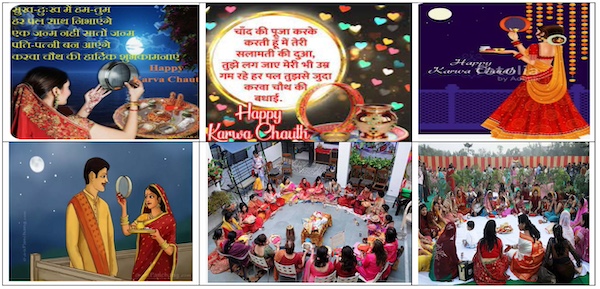Contribute
| Know How Karva Chauth, An Ancient Tradition Strengthens Modern World |
Pt. Hemant Ramrakhyani
10/12/2025
Know How Karva Chauth, An Ancient Tradition Strengthens Modern World As the full moon of the Kartik month rises, married women across North India and beyond will break a day-long fast, following rituals that have been observed for centuries. Karva Chauth is a festival rooted in the Hindu tradition, but it is far more than a religious observance. It is a vibrant tapestry of love, devotion, community, and personal sacrifice that, in modern times, is evolving to reflect changing relationships. According to Drik Panchanga, in 2025, Karwa Chauth will be observed on Friday, October 10. The festival falls on the fourth day, Chaturthi of the dark fortnight known as Krishna Paksha in the Hindu month of Kartik, which comes right after the Navratri celebrations. The tithi actually begins on Thu, Oct 9, 2025 at 10:54pm – Fri, Oct 10, 2025 at 7:38pm. The fasting is observed on the day when the Chaturthi tithi is active. So, October 10 is the correct day for observing Karva Chauth this year. At its core, Karva Chauth is an act of prayer. Women observe a nirjala fast, abstaining from both food and water from sunrise to moonrise to pray for the health, well-being, and longevity of their husbands. This unwavering devotion, however, is woven with powerful historical and mythical narratives that have shaped the festival's deeper meaning. Karva Chauth is one of the most celebrated and revered festivals among the married Sanatani women. The festival is a symbol of love, devotion, and the sanctity of marriage, observed with great enthusiasm and tradition. Through this festival married women strengthen the institution of marriage and pray for not only for the long life and well-being of their husbands but also for marital bliss, often by emulating goddesses like Goddess Parvati and her devotion to Lord Shiva. Folklores women’s strength and dedication for their husbands These stories highlight the festival's ancient origins, reflecting a time when life was precarious, and a wife's prayer for her husband's safe return from war was a heartfelt reality. Beyond the fast: The fabric of community Historically, Karva Chauth was also a time for women to foster community. In the days of arranged marriages, where a newlywed might feel isolated in her new home, the ritual of exchanging earthen pots (Karvas) with other women of her new village created a vital bond of female friendship. This network of "god-sisters" provided a crucial support system for navigating new family and social dynamics. This spirit of camaraderie continues today, with women gathering to apply mehendi, dress in their finest traditional attire, and listen and share stories while awaiting the moon's arrival. Karva Chauth in the 21st century Ultimately, Karva Chauth is evidence to the power of ritual to evolve while retaining its core objectives the same. What began as a solemn vow rooted in ancient traditions has transformed into a heartfelt celebration of marital love, female solidarity, and personal devotion. As couples look to the moon on the Karva Chauth day, they connect not only with their partners but with a sacred description of love and sacrifices in life for the purpose of building a strong, happy, and prosperous family in particular and a principled and noble civilization in general.
by Pt. Hemant Ramrakhyani
Among the most enduring legends is the tale of Savitri, who, with her immense devotion, retrieved her husband's life from Yama, the god of death. Another popular story tells of Queen Veervati, whose brothers, unable to see her suffer from the rigors fasting, tricked her into breaking it early. When news of her husband's death arrived, a remorseful Veervati was advised by Goddess Parvati to observe the fast again. Her unwavering devotion ultimately brought her husband back to life.
While traditional aspects of the festival remained the same, the festival is adapting to modern-day perspectives of mutual devotion as well. A notable shift is the growing number of husbands who now fast alongside their wives. This mutual act transforms the tradition into a symbol of shared commitment and mutual respect, acknowledging the equal partnership within a marriage. For some, the fast has become a strength and resilience. The act of abstaining from food and water for a day is viewed not as a subjugation but as a powerful personal vow of love and developing a strong will-power. In the Indian diaspora, Karva Chauth has become a vital way to preserve cultural heritage. Communities gather or connect virtually, ensuring traditions thrive across distances and generations. Due to acceptance of Karva Chauth’s meaningful principals, this festival is becoming popular even among those who did not traditionally celebrate and some unmarried couples as a gesture of deep affection.
You may also access this article through our web-site http://www.lokvani.com/
